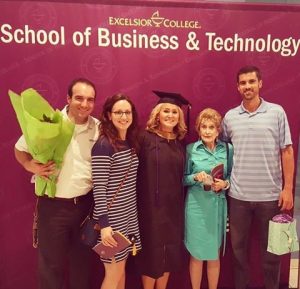By Amy Erickson
About five years ago, one university encouraged instructors and staff to create Twitter accounts. Unfortunately, the instructors and staff weren’t given any guidance as to how or why to use Twitter. I felt it was a great place to store frequently accessed articles or to share articles on topics relevant to current student literature reviews. But I had a feeling that this resource could be more useful.
Other colleagues of mine were a bit more skeptical. They viewed Twitter as a way of keeping up with celebrity gossip and another means of chipping away at an already low student attention span. Dr. Lang’s video “How Can I Use Twitter to Improve Teaching and Learning?” shows that there’s much more to Twitter than snarky political comments, fashion advice, or pleas of innocence. In this video, he discusses how to use Twitter to enhance classroom learning, and shares easy-to-follow instructions on how to curate course-specific hashtags.
Meeting Students in the Middle
In last week’s post, I mentioned that educator Dr. John Orlando (2016) recommends we incorporate technologies that compete for student attention into our educational materials. If students want to be on Twitter during class, why not make it a class requirement? In his Mentor Commons video, Dr. Lang (2014) suggests that educators can accomplish three things with Twitter:
- Connect course material to the real world in a way that interests students
- Give students a way to interact with you, with each other, and with experts
- Provide a space in which you can store course material and resources
Real World in Real Time
Dr. Lang (2014) suggests using Twitter to connect to experts in the field. If you are teaching in an education program, you may encourage students to follow Ken Bain, the Teaching Professor, or Daniel Willingham. If you teach literature courses, you may want to follow Sheryl WuDunn, Bill Bryson, or Junot Diaz. If students have a question about a short story, it’s wonderful for them to be able to reach out and ask the author questions via Twitter. Who are the experts in your field? Are they on Twitter? Check it out!
Improved Interaction
Twitter can improve and increase your interactions with your class, and interactions between classmates. This is particularly important in an online classroom where students can feel disconnected. Dr. Lang (2014) encourages professors to ask students to go out and find current articles, videos, or Twitter posts that relate to the class. This encourages dialogue between students and affords them with the opportunity to interact with professionals in the field. Instructors can also use Twitter as a springboard for personalized discussions with individual students.
Resource Storage
When you create a hashtag for your course (explained in the next section) you can save and store files for current and future students to reference. To prevent loss of course materials, create a backup folder for yourself, since Twitter does not store these items indefinitely.
Getting Started
If you don’t have an account, you can set one up very easily. When you create your account, use the @ symbol in front of the user ID you’d like to use. For instance, my Twitter account is @LiteratureCoach.
Hashtags are the number sign (#) followed by a keyword. Dr Lang (2014) indicates that hashtags are “the most important thing to use when you’re on Twitter,” and urges educators to use them to “categorize your tweets and…see other people who are tweeting in the areas in which you are interested.”
Let’s say you wanted to read up on material related to online teaching. You can type #onlineteaching in the search box at the top right of the Twitter screen. If you find an article you’d like to share, post it with a relevant hashtag so others can find it.
Creating a hashtag for your class is important, and it should be specific. Use elements of your college and course names for clarity. For example, if you’re teaching a composition course for nurses, #composition would be too general, whereas #EXC101NComp4Nurses is more precise.
When you find articles that pertain to your class, post them with the hashtag that you created for your class. This enables students to search for the hashtag in Twitter and find any posts from you or other students that contain it.
The Difference between Following and Friending
Twitter is different than Facebook. If you friend someone on Facebook, you can see their posts, and they can see yours. However, in Twitter, students can “follow” you to see your posts, whether or not you follow their Twitter accounts in return.
#Let’s Go!
If you’re a frequent Twitter user, please share your own ideas, experiences, and resources below!
References
Lang, J. (2014). How can I use Twitter to improve teaching and learning? [Webinar]. In Magna 20-Minute Mentor. Retrieved from http://www.magnapubs.com/online/mentor/how-can-i-use-twitter-to-improve-teaching-and-learning-13265-1.html
Orlando, J. (2016, September). Tips from the pros: Curt Bonk talks about open education. Online Classroom. Retrieved September 14, 2016, from http://www.magnapubs.com/newsletter/online-classroom/151/Tips-from-the-Pros-Curt-Bonk-Talks-about-Open-Education-14177-1.html
 There’s an app for everything these days. We went and did some legwork for you hardworking students and found the most helpful apps for your needs. These apps range from organization all the way to self-care! Stay tuned for more exciting app features posted every month from your Success Coaches, Kelli and Hannah!
There’s an app for everything these days. We went and did some legwork for you hardworking students and found the most helpful apps for your needs. These apps range from organization all the way to self-care! Stay tuned for more exciting app features posted every month from your Success Coaches, Kelli and Hannah!





 Vehicles have notoriously been vulnerable to attack from various sources. These have varied from the equipment, endpoints, and communication being insecure to open ports. Regardless of the source, these have historically and continue to provide ample attack surfaces for those with malicious intent.
Vehicles have notoriously been vulnerable to attack from various sources. These have varied from the equipment, endpoints, and communication being insecure to open ports. Regardless of the source, these have historically and continue to provide ample attack surfaces for those with malicious intent.